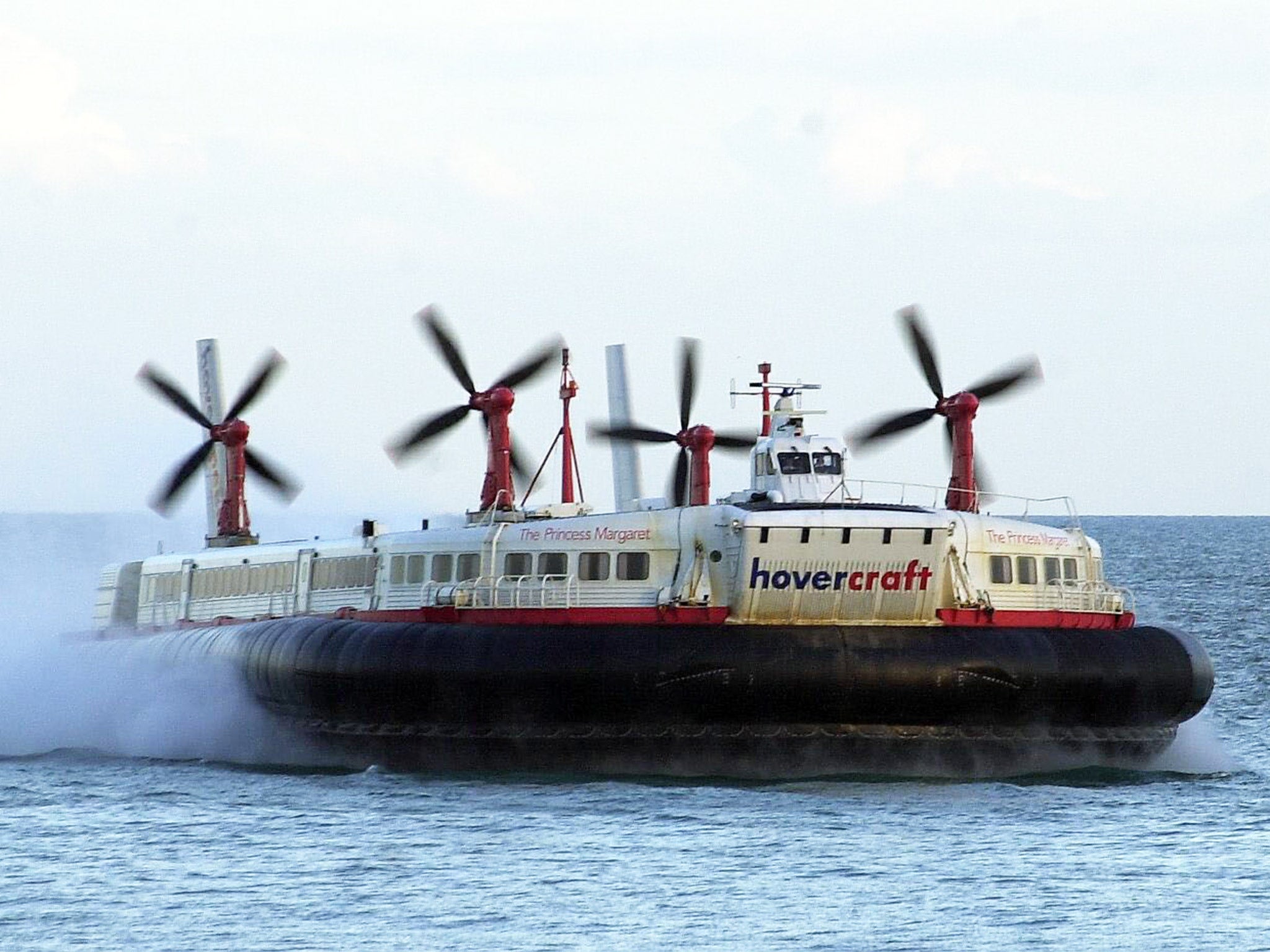Government housing scheme threatens two historic hovercraft with scrap heap
Sir Ranulph Fiennes and Princess Anne have backed a campaign to preserve the Hoverspeed vessels

Once they were the future of sea travel. Able to carry hundreds of passengers and dozens of cars across the Channel in less than half an hour in good conditions, hovercraft would speed past jealous ferry passengers and were sufficiently glamorous to count James Bond as a customer.
But those days seem a long time ago, and the last remaining Dover to Boulogne hovercraft – long since decommissioned following the advent of modern catamarans and the Channel Tunnel – now faces the scrap heap.
The Princess Margaret and Princess Anne Hoverspeed vessels have been on display at the Hovercraft Museum in Lee-on-the-Solent since 2000. However, the Government agency that owns them says it needs the land for housing, and they are now fenced off with their future uncertain.
They could yet be saved, however, thanks to an effort backed by Sir Ranulph Fiennes and Princess Anne herself.
Despite being stored at the museum, the SRN4 category hovercraft and the site where they are stored are owned by the Homes and Communities Agency (HCA) rather than the museum trust. There has been a protracted legal battle between transport heritage enthusiasts and the agency, which wants to develop the land to create new homes and an innovation centre. More than 10,000 people have signed the museum’s petition in two days, with the same number adding their names to a Change.org petition.
Video: first hovercraft run
The National Historic Ships Register has also stepped in to see if it can save the hovercraft which, at 47 years old, does not meet their 50-year criteria to qualify for the register.
History of the hovercraft
Inventors had tried to bring a hovercraft to life but it was mechanical engineer Sir Christopher Cockerell who made it feasible. He wanted to make a vehicle that would move over water on a layer of air and built several models of his hovercraft design in the early 1950s, which was put on a secret list.
However, tireless efforts to secure military funding failed. He later joked: “The navy said it was a plane not a boat; the air force said it was a boat not a plane; and the army was ‘plain not interested.’”
Hovercraft, hybrid vessels operated by a pilot as an aircraft rather than a captain as a marine vessel, were then declassified so Cockerell was able to secure funding from the National Research Development Corporation for development. The SRN1 vessel made its first hover on 11 June 1959 and successfully crossed the Channel the next month.
The fleet of eight SRN4 vessels – the world’s biggest – carried 18 million people from around the world and 15 million cars between France and England during their lifetime. They were built on the Isle of Wight by the British Hovercraft Corporation in the 1970s and operated from both Dover and Pegwell Bay before being replaced in 2000 by a catamaran service.
They were financed through duty-free sales, which off-set the fuel costs but when duty free was abolished in 2000 the hovercraft was axed as running costs became prohibitively expensive. Today Griffon Hoverwork, in Southampton, continues to lead an industry worth £30m selling craft all over the world.
“We feel at least one of the hovercraft should be saved from destruction to pass on to next generations,” said museum trustee Warwick Jacobs. “We’ve also had phone calls from France, where they believe it’s as much a French hovercraft as it is British. As many French people and cars travelled on it as British. They are talking about saving one on behalf of the Government for Calais, although it’s early days. And we would have one for the Hovercraft Museum.”
Mr Jacobs said the museum would, if necessary, clear the Princess Margaret – which featured in the Bond film Diamonds Are Forever – out of the way to be scrapped, or sent to France, to provide space for the HCA and allow the Princess Anne to be saved.
Sir Ranulph Fiennes, a museum patron who took a hovercraft along the River Nile in the 1970s, has contacted the trustees to say he will do what he can to help the cause.
And, although the Royal family do not speak publicly on political decisions, The Independent understands that Princess Anne’s office has been in touch with the Hovercraft Museum expressing her support for the campaign.
“There has been an enormous response from the public worldwide,” Mr Jacobs said. “People in Australia and South Africa have been in touch supporting us, which has left us, as well as the land agents, quite startled.
“And to be told just a few weeks after we have reopened the museum, after two years of refurbishment, that the hovercraft giants can’t stay here is a catastrophe. The hovercraft are as British as the Mini or Concorde. Once they’re gone you’ll never see them again.”
Gosport MP Caroline Dinenage said: "I am hopeful that a deal can be struck which will enable the Hovercraft Museum to gain an important addition to their collection - the Princess Anne - that adds to the site and does not distract from developing the waterfront, which is very important in the creation of jobs and the economic prosperity of our area.”
An HCA spokesperson said: “Our aim is to develop the land to create much needed homes and jobs, and regenerate the local area. However, we take our responsibility to national heritage seriously. We are talking to local partners to find a solution for the hovercraft and considering all options, including proposals from the Hovercraft Museum to save one of the craft.”
Subscribe to Independent Premium to bookmark this article
Want to bookmark your favourite articles and stories to read or reference later? Start your Independent Premium subscription today.

Join our commenting forum
Join thought-provoking conversations, follow other Independent readers and see their replies